Filter (you want to put this in a sidebar)
Projecten
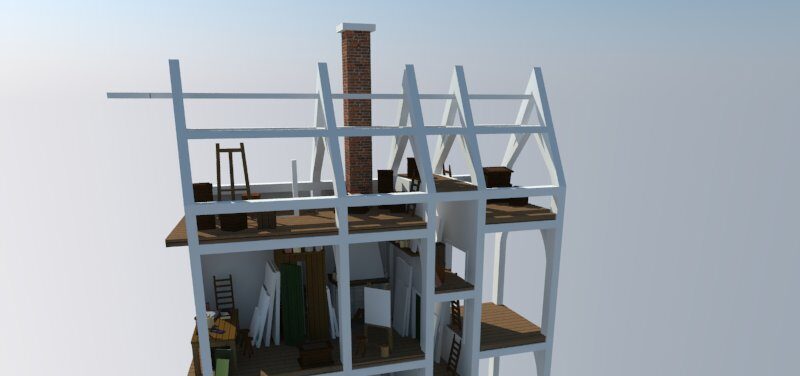 3D model of a painter’s shop in Warmoesstraat 138 - Lead by Madelon Simons, this project consisted in remodelling the shop and house of a sixteenth-century Amsterdam painter, Dirck Barendsz. The intention of the project was to explore virtual interiors as interfaces to historical data. While historical data can often be studied by way of quantification, qualitative close-reading and theContinue Reading
3D model of a painter’s shop in Warmoesstraat 138 - Lead by Madelon Simons, this project consisted in remodelling the shop and house of a sixteenth-century Amsterdam painter, Dirck Barendsz. The intention of the project was to explore virtual interiors as interfaces to historical data. While historical data can often be studied by way of quantification, qualitative close-reading and theContinue Reading A Reconstruction of ‘t Paradijs’ in 16th-century Amsterdam - The reconstruction of ‘t Paradijs (‘the paradise’) was a project initiated by art historian Dr. Madelon Simons between 2013 and 2014. Her main aim was to reconstruct the premises of Pompejus Occo, a wealthy merchant, banker and humanist and one of the most prominent figures of early 16thcentury Amsterdam. FromContinue Reading
A Reconstruction of ‘t Paradijs’ in 16th-century Amsterdam - The reconstruction of ‘t Paradijs (‘the paradise’) was a project initiated by art historian Dr. Madelon Simons between 2013 and 2014. Her main aim was to reconstruct the premises of Pompejus Occo, a wealthy merchant, banker and humanist and one of the most prominent figures of early 16thcentury Amsterdam. FromContinue Reading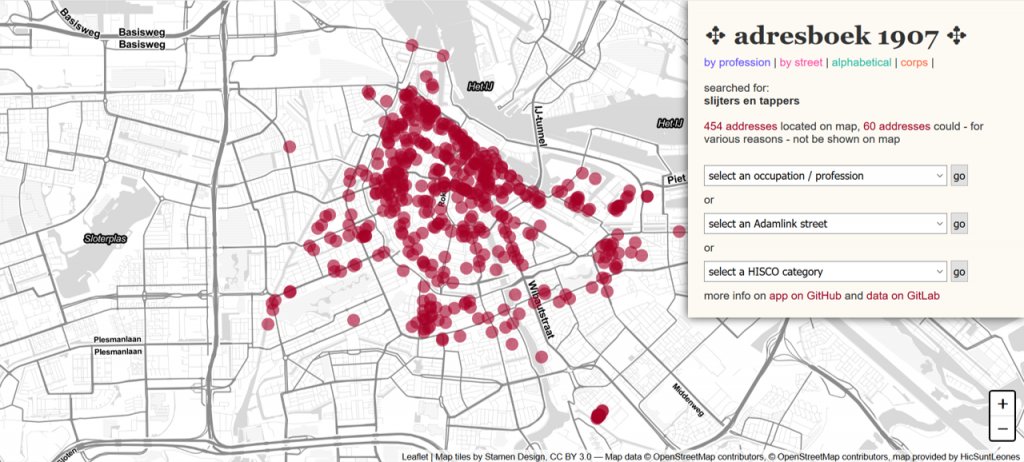 Amsterdam Address book 1907 - This project focuses on data from the Amsterdam Address book of 1907. Names of persons and companies, their professions and addresses were extracted using regular expressions. The addresses were aligned with Adamlink streets and HisGis location points. In the alignment process, streets that were not yet present in the AdamlinkContinue Reading
Amsterdam Address book 1907 - This project focuses on data from the Amsterdam Address book of 1907. Names of persons and companies, their professions and addresses were extracted using regular expressions. The addresses were aligned with Adamlink streets and HisGis location points. In the alignment process, streets that were not yet present in the AdamlinkContinue Reading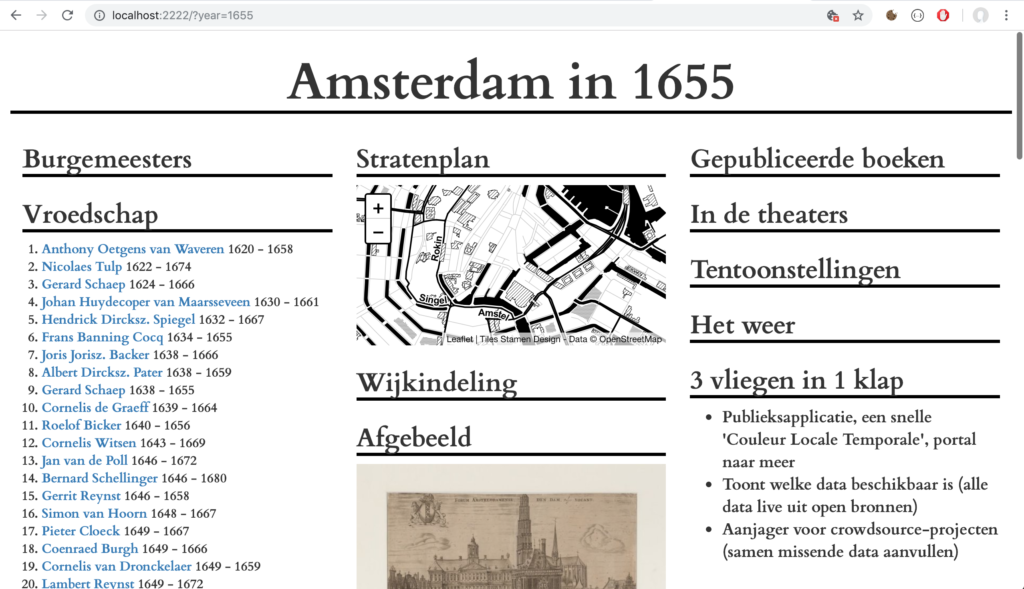 Amsterdam in …. : an application to explore ATM data - Amsterdam in is an ongoing project aimed at showing which resources are already available as Linked Open Data (and which aren’t). It’s updated regularly, if you know of resources that should be included, please let us know! Continue Reading
Amsterdam in …. : an application to explore ATM data - Amsterdam in is an ongoing project aimed at showing which resources are already available as Linked Open Data (and which aren’t). It’s updated regularly, if you know of resources that should be included, please let us know! Continue Reading Amsterdam Southeast: Understanding the Past to Shape the Future - The Amsterdam Time Machine doesn’t only focus on the past, but also wants to contribute to the future design of the city: “Understanding the past to shape the future”. Keeping this motto in mind, we have started a pilot project in Amsterdam Southeast (Zuidoost). Based on historical data, we wantContinue Reading
Amsterdam Southeast: Understanding the Past to Shape the Future - The Amsterdam Time Machine doesn’t only focus on the past, but also wants to contribute to the future design of the city: “Understanding the past to shape the future”. Keeping this motto in mind, we have started a pilot project in Amsterdam Southeast (Zuidoost). Based on historical data, we wantContinue Reading Amsterdam Time Machine voor de Joodse buurt - Samen met het Joods Museum heeft de Amsterdam Time Machine het initiatief genomen om datasets uit verschilelnde archieven en collecties over Joods Amsterdam met elkaar te verbinden. Samen met Menno den Engelse van Islands of Meaning zijn we gestart met het in kaart brengen van twee straten: de Jodenbreestraat en de Nieuwe Amstelstraat. Het Joods Museum heeft uitgezochtContinue Reading
Amsterdam Time Machine voor de Joodse buurt - Samen met het Joods Museum heeft de Amsterdam Time Machine het initiatief genomen om datasets uit verschilelnde archieven en collecties over Joods Amsterdam met elkaar te verbinden. Samen met Menno den Engelse van Islands of Meaning zijn we gestart met het in kaart brengen van twee straten: de Jodenbreestraat en de Nieuwe Amstelstraat. Het Joods Museum heeft uitgezochtContinue Reading Cinema Parisien 3D - Between November 2014 and December 2015, Julia Noordegraaf, Loes Opgenhaffen and Norbert Bakker collaborated on building a 3D visualisation of Cinéma Parisien, one of the first permanent cinema theatres in Amsterdam, established in 1910 by cinema owner and distributor Jean Desmet (1875-1956). The project aimed to investigate the affordances of 3DContinue Reading
Cinema Parisien 3D - Between November 2014 and December 2015, Julia Noordegraaf, Loes Opgenhaffen and Norbert Bakker collaborated on building a 3D visualisation of Cinéma Parisien, one of the first permanent cinema theatres in Amsterdam, established in 1910 by cinema owner and distributor Jean Desmet (1875-1956). The project aimed to investigate the affordances of 3DContinue Reading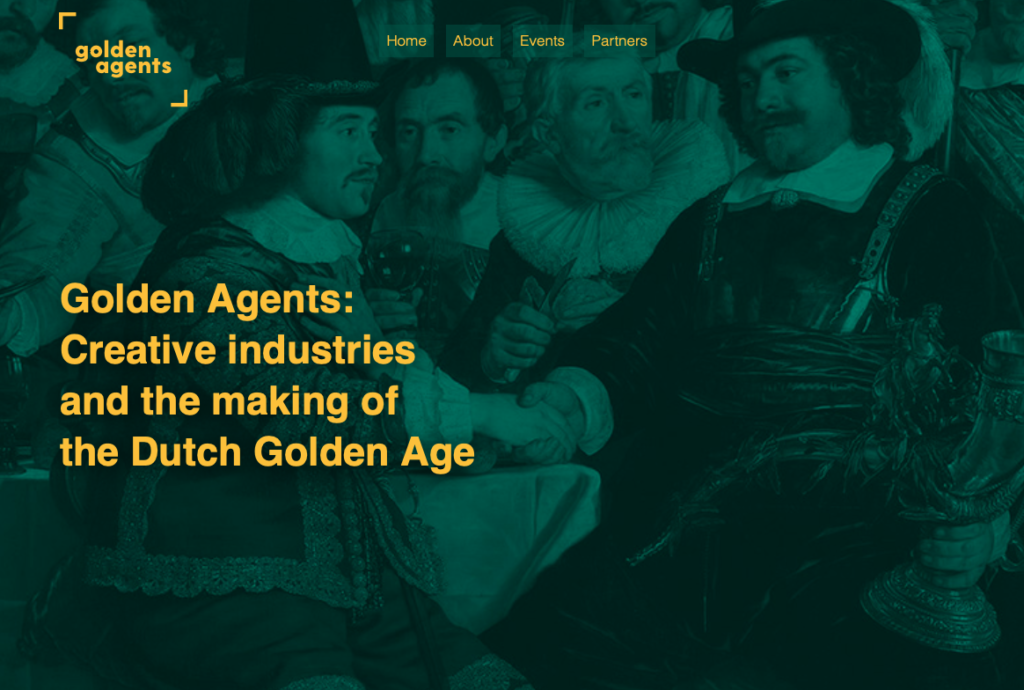 Golden Agents - Painting, printmaking, book production and other creative industries of the Dutch Golden Age are of continuous interest to Dutch and foreign scholars from various disciplines. Various research groups, institutions and individual researchers develop data repositories and analytical tools to study the Dutch Golden Age. Unfortunately, this often results in fragmentationContinue Reading
Golden Agents - Painting, printmaking, book production and other creative industries of the Dutch Golden Age are of continuous interest to Dutch and foreign scholars from various disciplines. Various research groups, institutions and individual researchers develop data repositories and analytical tools to study the Dutch Golden Age. Unfortunately, this often results in fragmentationContinue Reading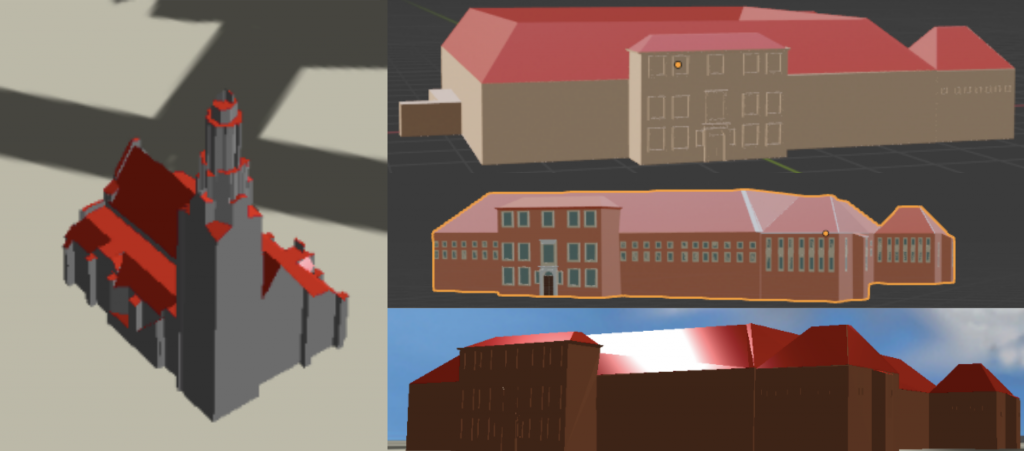 Google’s Re.City pilot project - As part of an internship within the Amsterdam Time Machine, under the supervision of Melvin Wevers and Chiara Piccoli, Daan Groot evaluated Google’s new tool Rǝ, also known as ‘Re.City’. Through crowdsourcing, Google seeks to gather metadata, maps, pictures, and even 3D models of historical cities. In their 3D platform,Continue Reading
Google’s Re.City pilot project - As part of an internship within the Amsterdam Time Machine, under the supervision of Melvin Wevers and Chiara Piccoli, Daan Groot evaluated Google’s new tool Rǝ, also known as ‘Re.City’. Through crowdsourcing, Google seeks to gather metadata, maps, pictures, and even 3D models of historical cities. In their 3D platform,Continue Reading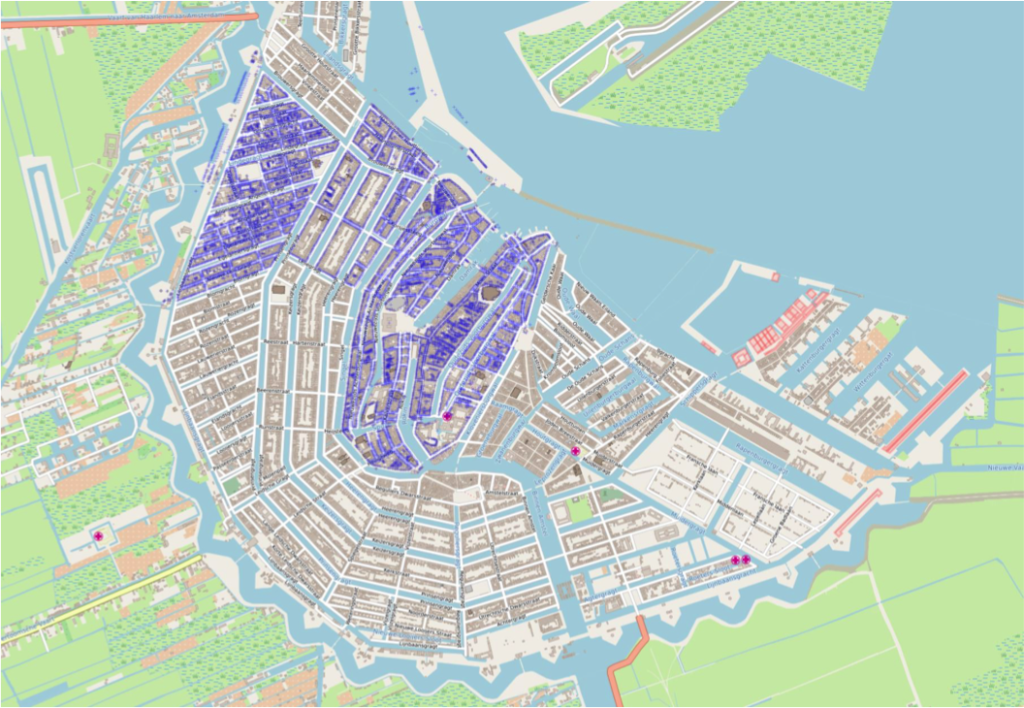 HisGIS/CLARIAH for ATM – building a geo infrastructure for time travel - The CLARIAH-board awarded the Amsterdam Time Machine (ATM) project a grant of € 251.000,- to help realize the geographical infrastructure . Thanks to this grant the geo-infrastructure HisGIS of the Fryske Akademy will become available to ATM and the general CLARIAH-infrastructure. Part of the grant will be used for threeContinue Reading
HisGIS/CLARIAH for ATM – building a geo infrastructure for time travel - The CLARIAH-board awarded the Amsterdam Time Machine (ATM) project a grant of € 251.000,- to help realize the geographical infrastructure . Thanks to this grant the geo-infrastructure HisGIS of the Fryske Akademy will become available to ATM and the general CLARIAH-infrastructure. Part of the grant will be used for threeContinue Reading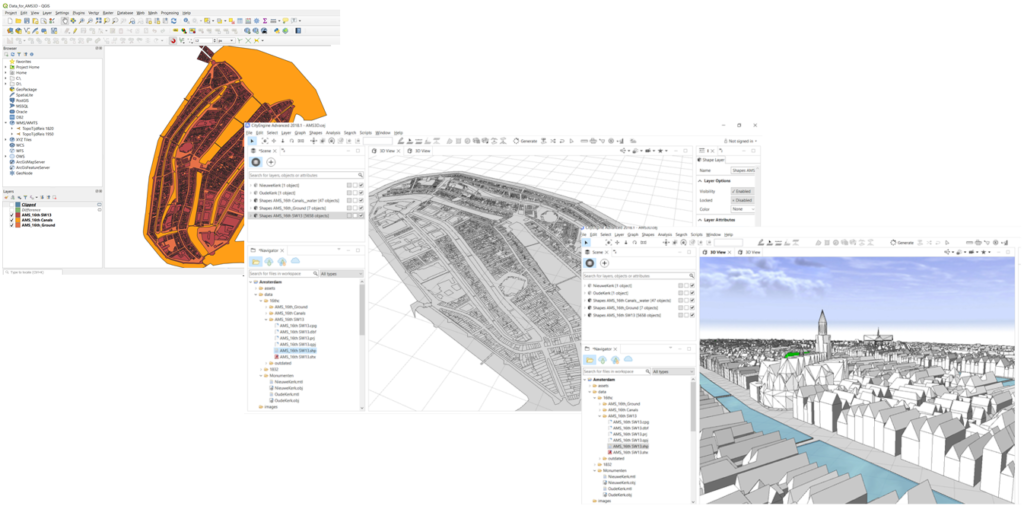 Historical Amsterdam in 3D/4D – pilot study - One of the aims of the Amsterdam Time Machine is to develop a 3D/4D urban model where socio-historical data about the city can be mapped and queried. Manually modelling each building individually is however a too time-consuming task. The most efficient approach entails therefore the semi-automatic generation of buildings. Ideally,Continue Reading
Historical Amsterdam in 3D/4D – pilot study - One of the aims of the Amsterdam Time Machine is to develop a 3D/4D urban model where socio-historical data about the city can be mapped and queried. Manually modelling each building individually is however a too time-consuming task. The most efficient approach entails therefore the semi-automatic generation of buildings. Ideally,Continue Reading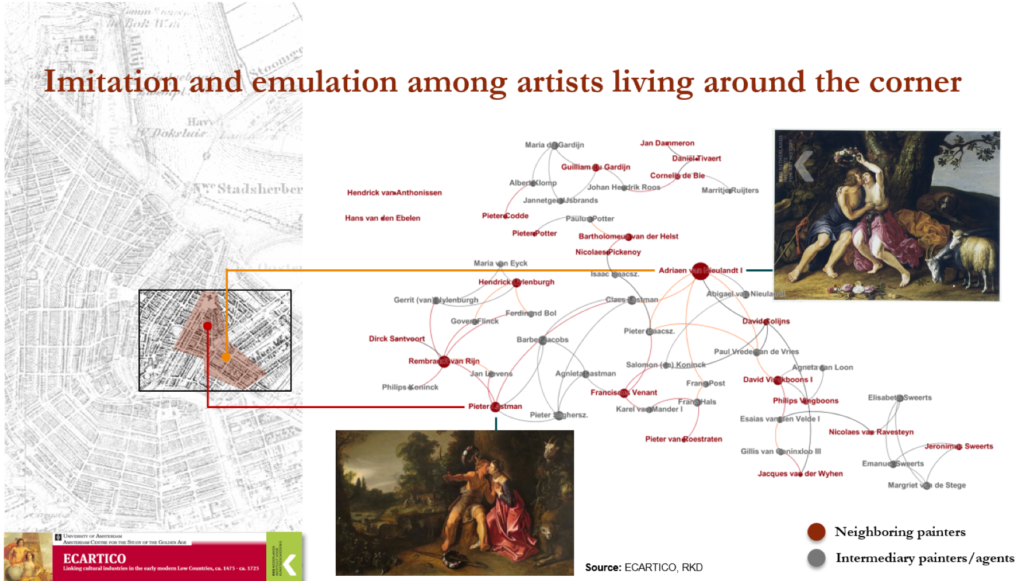 Imitation and emulation in Rembrandt’s neighborhood - This research intends to fill this gap through deep-mapping the production and consumption of painting in seventeenth-century Amsterdam, with a focus on Rembrandt’s neighborhood, Sint Antoniesbreestraat. Continue Reading
Imitation and emulation in Rembrandt’s neighborhood - This research intends to fill this gap through deep-mapping the production and consumption of painting in seventeenth-century Amsterdam, with a focus on Rembrandt’s neighborhood, Sint Antoniesbreestraat. Continue Reading Integration and Social Mobility: The Descendants of Early Modern Immigrants in Amsterdam, 1660-1811 - The project ‘Integration and Social Mobility: The Descendants of Early Modern Immigrants in Amsterdam, 1660-1811’ addresses one of the major questions in Dutch migration history: what happened to the descendants of the hundreds of thousands of immigrants who migrated to the Dutch Republic in the early modern period? Today, nearlyContinue Reading
Integration and Social Mobility: The Descendants of Early Modern Immigrants in Amsterdam, 1660-1811 - The project ‘Integration and Social Mobility: The Descendants of Early Modern Immigrants in Amsterdam, 1660-1811’ addresses one of the major questions in Dutch migration history: what happened to the descendants of the hundreds of thousands of immigrants who migrated to the Dutch Republic in the early modern period? Today, nearlyContinue Reading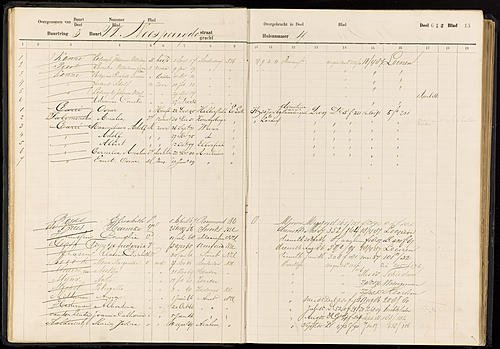 Living and Working in 19th Century Amsterdam - In this project, CREATE programmers and researchers are working on extracting and connecting information on people living and working in Amsterdam during the nineteenth century. The population registers [=Bevolkingsregisters] of Amsterdam in parts 1851-1853, 1853-1863 and 1874-1893 provide information on the history of inhabitants of residences in Amsterdam in theContinue Reading
Living and Working in 19th Century Amsterdam - In this project, CREATE programmers and researchers are working on extracting and connecting information on people living and working in Amsterdam during the nineteenth century. The population registers [=Bevolkingsregisters] of Amsterdam in parts 1851-1853, 1853-1863 and 1874-1893 provide information on the history of inhabitants of residences in Amsterdam in theContinue Reading Leven met water in Amsterdam - Water en watermanagement zijn altijd al belangrijke thema's geweest voor Amsterdam. Door de eeuwen heen is een complex systeem van sluizen en dijken aangelegd om de waterniveaus in de stad te reguleren. Het belang van het Amsterdamse watersysteem, met name in een tijdContinue Reading
Leven met water in Amsterdam - Water en watermanagement zijn altijd al belangrijke thema's geweest voor Amsterdam. Door de eeuwen heen is een complex systeem van sluizen en dijken aangelegd om de waterniveaus in de stad te reguleren. Het belang van het Amsterdamse watersysteem, met name in een tijdContinue Reading Memories from Amsterdam - The Amsterdam Time Machine collaborates with researchers from Amsterdam Diaries, a project led by Babs Boter (Free University Amsterdam) and Marleen Rensen (University of Amsterdam). This project aims to collect, study, and present personal stories on the city of Amsterdam throughout the centuries to a broad audience. With an interdisciplinaryContinue Reading
Memories from Amsterdam - The Amsterdam Time Machine collaborates with researchers from Amsterdam Diaries, a project led by Babs Boter (Free University Amsterdam) and Marleen Rensen (University of Amsterdam). This project aims to collect, study, and present personal stories on the city of Amsterdam throughout the centuries to a broad audience. With an interdisciplinaryContinue Reading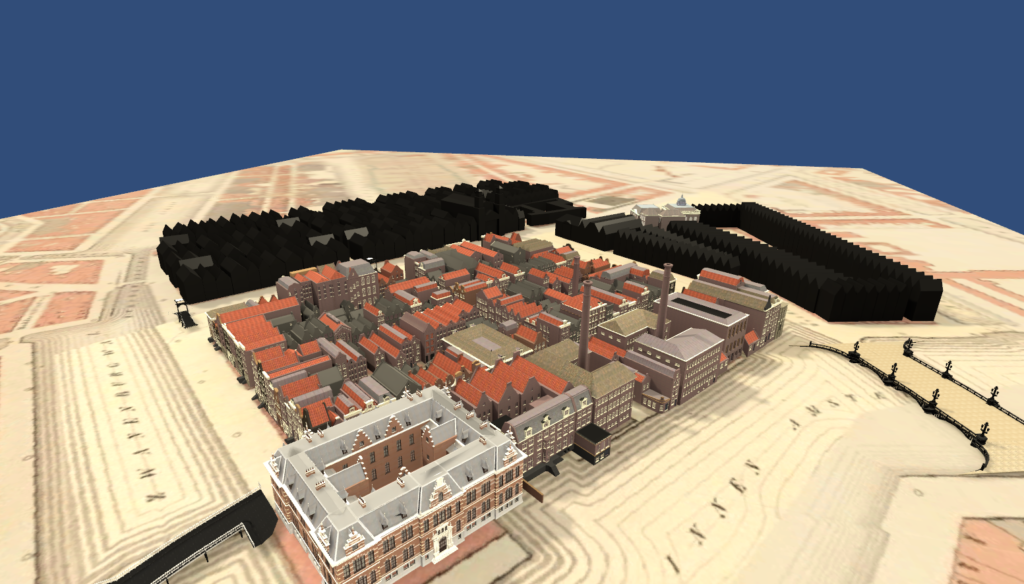 Navigating Jewish Amsterdam’s Past with Linked Open Data - The Amsterdam Time Machine is working on several different applications, each illustrating a part of the ATM philosophy. In the Jewish Quarter project, the subject of an earlier post, the central goal is to connect datasets from different archives and museums that enable story telling about people, houses, and eventsContinue Reading
Navigating Jewish Amsterdam’s Past with Linked Open Data - The Amsterdam Time Machine is working on several different applications, each illustrating a part of the ATM philosophy. In the Jewish Quarter project, the subject of an earlier post, the central goal is to connect datasets from different archives and museums that enable story telling about people, houses, and eventsContinue Reading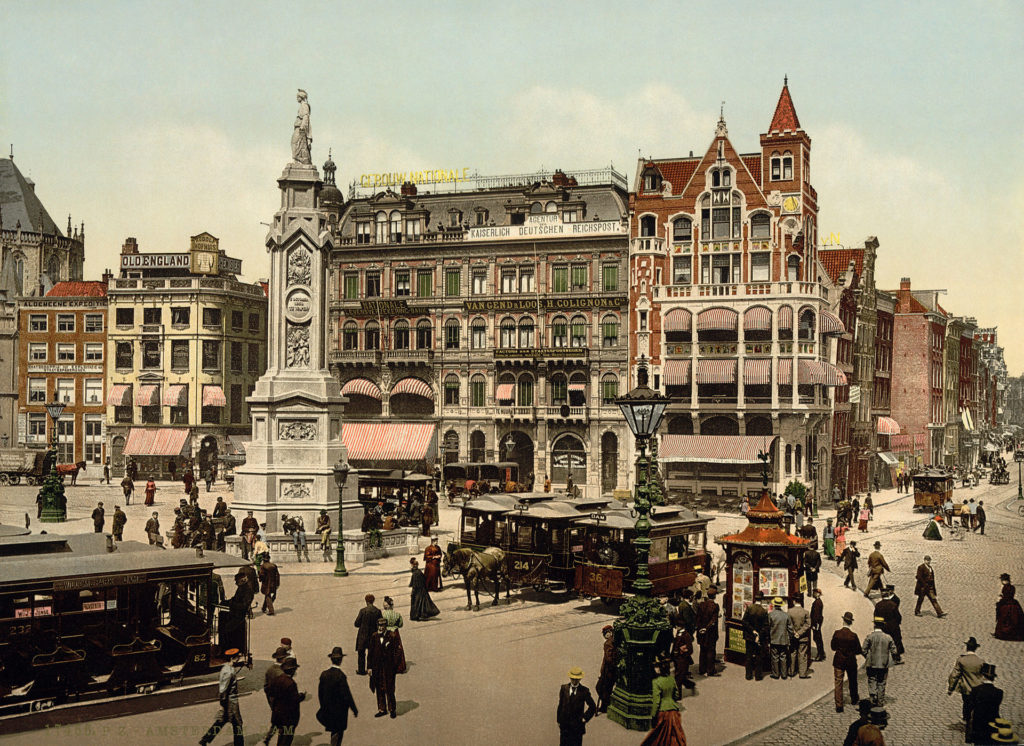 Out on the town: leisure & nightlife - This project brings together various efforts to collect, map and analyse data on Amsterdam leisure and nightlife venues, such as data on cinema’s, theaters, music venues, exhibitions, restaurants, bars, nightclubs etc. We’re working on connecting various resources, including: online datasets (such as cinema context; wikidata) datasets that are under construction:Continue Reading
Out on the town: leisure & nightlife - This project brings together various efforts to collect, map and analyse data on Amsterdam leisure and nightlife venues, such as data on cinema’s, theaters, music venues, exhibitions, restaurants, bars, nightclubs etc. We’re working on connecting various resources, including: online datasets (such as cinema context; wikidata) datasets that are under construction:Continue Reading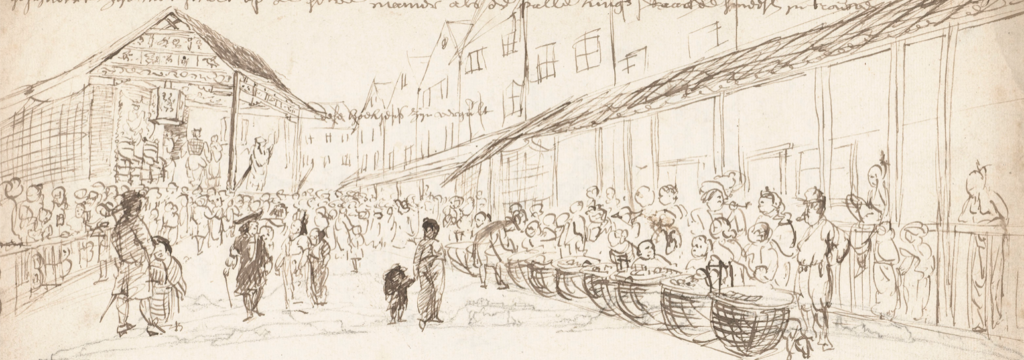 The Freedom of the Streets: Gender & Urban Space in Eurasia 1600-1850 - We analyse the gendering of urban space in the early modern city. It is widely held that between 1600 and 1850, women gradually withdrew from the public sphere of the street and moved to the private sphere of the home. This powerful narrative, linked to theories of modernisation, has created a conceptual stranglehold that sees public space as exclusively male and private space as entirely female, thereby obscuring the actual workings of gender in pre-industrial urban societies.Continue Reading
The Freedom of the Streets: Gender & Urban Space in Eurasia 1600-1850 - We analyse the gendering of urban space in the early modern city. It is widely held that between 1600 and 1850, women gradually withdrew from the public sphere of the street and moved to the private sphere of the home. This powerful narrative, linked to theories of modernisation, has created a conceptual stranglehold that sees public space as exclusively male and private space as entirely female, thereby obscuring the actual workings of gender in pre-industrial urban societies.Continue Reading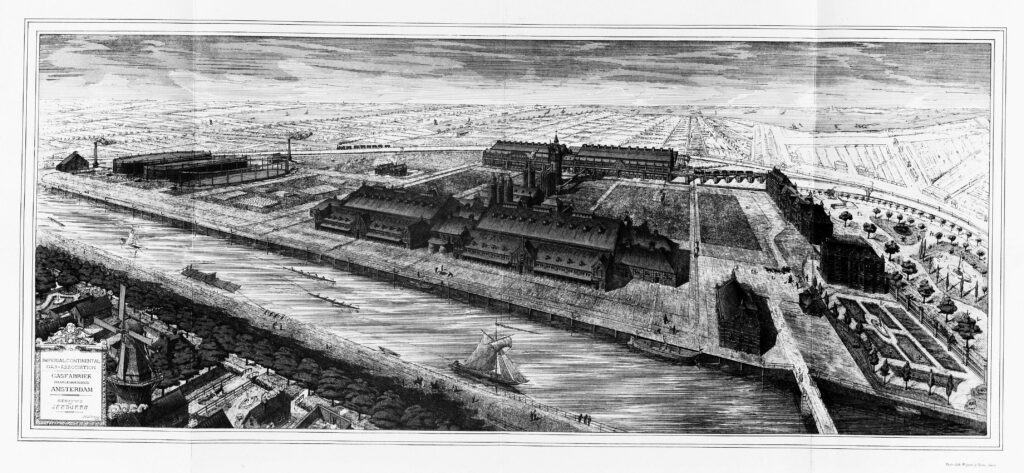 The Westergasfabriek: A Visualization of Industrial Heritage turned Cultural Hotspot - Amsterdam, a rapidly expanding city, is confronted with a pressing housing shortage, further compounded by the challenges posed by climate change. This necessitates the task of formulating a sustainable urban future to accommodate the growing number of residents. The most prominent manifestation of this challenge is observed in the Haven-StadContinue Reading
The Westergasfabriek: A Visualization of Industrial Heritage turned Cultural Hotspot - Amsterdam, a rapidly expanding city, is confronted with a pressing housing shortage, further compounded by the challenges posed by climate change. This necessitates the task of formulating a sustainable urban future to accommodate the growing number of residents. The most prominent manifestation of this challenge is observed in the Haven-StadContinue Reading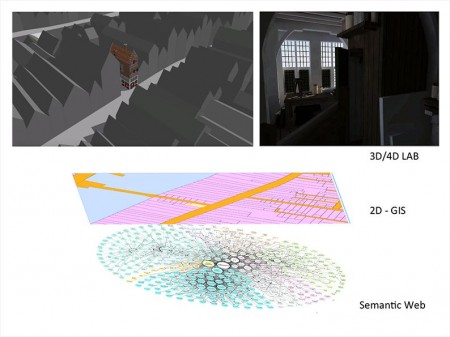 Virtual Interiors as Interfaces for Big Historical Data - The Virtual Interiors project focuses on the question of how we can develop and publish 2D/3D/4D user interfaces to the linked data of the Semantic Web in the form of digital maps and virtual rooms using historical data on the production and the consumption of the Dutch Golden Age. Continue Reading
Virtual Interiors as Interfaces for Big Historical Data - The Virtual Interiors project focuses on the question of how we can develop and publish 2D/3D/4D user interfaces to the linked data of the Semantic Web in the form of digital maps and virtual rooms using historical data on the production and the consumption of the Dutch Golden Age. Continue Reading